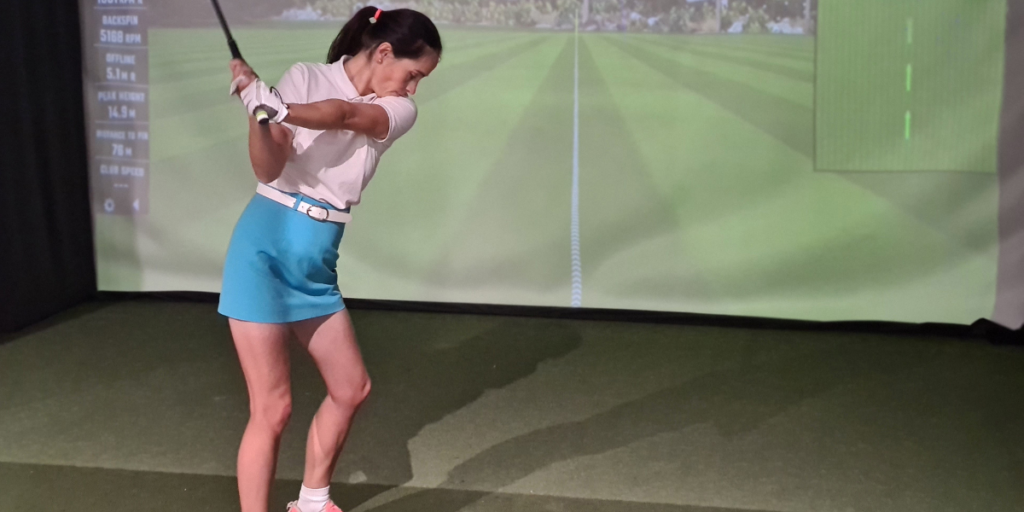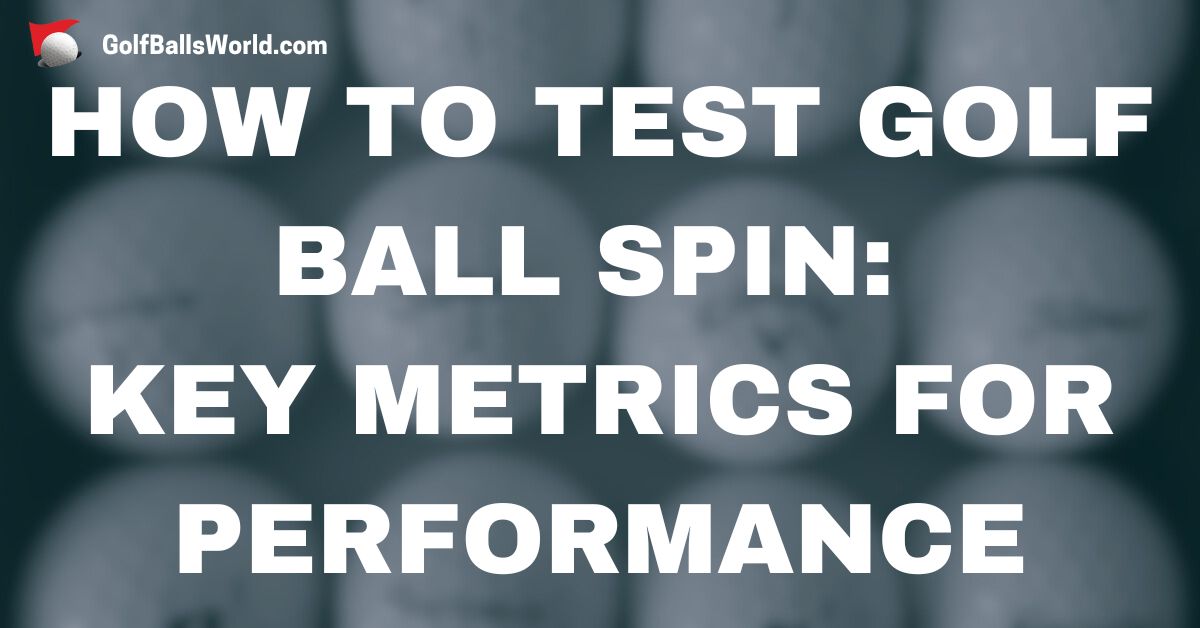Now, be honest when I ask you this question. How cool is it to watch a professional golfer spin the golf ball back when it lands on the green? Pretty cool, right? On a more serious note, you don’t have to do that to be a good golfer. However, spin can bring your game to another level. Depending on the ball you play, there could be more or less spin involved. Ideally, you want to have a ball with a bit more spin. If you wonder how to test golf ball spin to have the right ball, keep reading.
Just to be clear, there is also side spin involved in the equation. It will help you shape your shots to hit that perfect draw or fade. Again, the workability of a ball depends on the construction and what the ball’s purpose is. Premium balls are designed to provide more spin than lower-tier ones. Nonetheless, this does not mean premium balls are the solution by default. There is more to it than meets the eye. Let’s dive into it.
Key Metrics for Evaluating Golf Ball Spin
There are only a couple of key metrics for evaluating golf ball spin. The most important one is the spin rate, then there is the launch angle, and it is also important to differentiate backspin and sidespin.
- Spin Rate: Measured in revolutions per minute (RPM) gives insight into how much your ball spins after you hit it. A higher spin rate isn’t necessarily better. You want balance to control the distance and shot shape the way you want it.
- Launch Angle: It plays an important role if you want a higher flight or a flatter trajectory. Combined with the spin rate it defines how your ball flies. When you add ball speed to the equation, you get three factors that define the arc and roll of each shot.
- Backspin and Sidespin: Each serves its purpose. Backspin helps gain altitude and control, and it is good for accuracy. Meanwhile, sidespin shapes your shot into that perfect draw or fade (also, hook or slice when uncontrolled). Additionally, less sidespin, or the lack of it will get the ball going straighter.
Tools and Techniques for Measuring Spin Rates
There are a couple of ways to measure spin rates. The first and most accurate is using precise tools like Trackman, FlightScope, or Foresight, launch monitors, to name a few. Then there is a cheaper way that requires experience and time, and that is testing balls while playing golf. Let me break down the two ways for you.
Launch Monitors or Golf Simulators
They are extremely handy for anyone serious about improving their game. They use radar and camera technology to track your ball’s speed, spin rate, and launch angle. Using these tools might seem tricky at first, but all it takes is a little practice. Set up your device according to its manual. Then, take a swing and check out the instant readout of your ball’s spin and flight data.
Understanding how to read this data is paramount. See how your adjustments in grip or swing mechanics alter the readouts. This feedback loop helps you figure out what works and what needs a little tweak. The biggest drawback with launch monitors is they are usually pricy. Also, you have to have space to use them.
Testing While Playing
I know this is old school, but it can be efficient. You know your game the best, and seeing how a ball behaves during a round is as real as it gets. Yes, you do not have the data, but you can see if the ball is doing what you want it to do. Also, the course gives you a natural environment where not all the lies are perfect.
Therefore, you won’t get numbers but you will experience it first hand. This is how I see how balls spin when I test them for a review. Additionally, it is good to have a ball for a benchmark. Usually, that is going to be the ball you play the most. Did I mention this method is way cheaper? Well, it will cost you a green fee, that is it.

How Spin Affects Control and Shot Shape
Spin heavily dictates shot trajectory and stability, affecting where and how your ball lands. Draws and fades rely on precise spin control. A controlled sidespin can send your ball curling left or right, depending on your grip and stance.
Managing backspin effectively can balance distance and precision. It ensures your ball lands where you want and how you want. What is the secret? Understanding how to balance your spin metrics. Sometimes, dialing down the spin helps when going for distance. In the same way, a touch more spin might offer that perfect drop-and-stop on the green.
Practical Tips for Optimizing Spin in Your Game
It is all about the gear. Picking the right golf ball and clubs tailored to your swing speed can make a world of difference in controlling spin rates.
Fine-tuning your swing adjustments involves serious practice. Take a good look at your grip and stance. A slightly stronger grip might reduce unwanted sidespin, while a proper stance can influence backspin positively.
Consider working with a coach or taking lessons focused on spin mechanics. Practical feedback from someone watching your game can pinpoint what adjustments will enhance spin control.
Training aids, like alignment sticks or swing sensors, offer great insight into your swing path and angle. They can be helpful in visualizing changes and improvements in your technique.
Then there is video analysis. Recording your swing to analyze the details can help you tweak it to reduce or add spin on demand. Collaborate with a coach or use an app to dissect each movement.
Leverage Golf Ball Spin for Improved Performance
Finally, understanding spin can elevate your golfing skills. Look at the data, test different balls on the course, and analyze your swing. It can all be a step toward improving your performance.
Also, embrace practicing with purpose. Whether on the range or the course, your knowledge of spin will set you apart. Make the best of it and turn your understanding into genuine improvements.
It all comes down to an ongoing process of perfecting skills. So, continue learning, seek feedback, and be persistent. As a wise man once said, golf is a journey!
Related
- How to Test Golf Balls for Performance – The Guide
- The Ultimate Guide to Test Golf Balls For Distance And Trajectory

